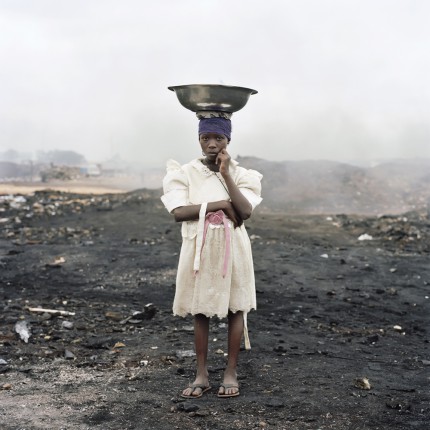Today I woke up with the wind on my mind.
It might have been the storms that whipped through Manhattan overnight. Loud and boisterous, the winds made it hard to sleep. But it might also have been my preoccupation with an article I read before bed: Suzy Hansen’s “The Istanbul Art-Boom Bubble,” in the New York Times Magazine dated February 10, 2012. With lots of photos, the article discussed the transformation of this Turkish town, from what writer Orhan Pamuk called a “pale, poor, second-class imitation of a Western city” in the 20th century to a booming cultural center in the 21st.
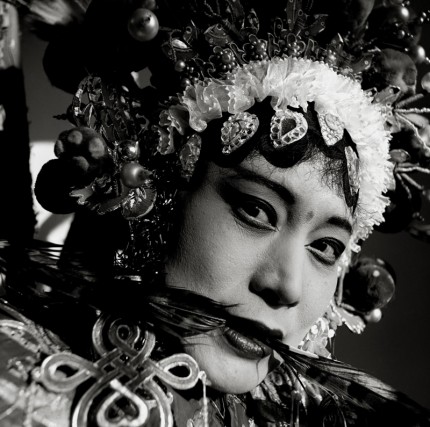
Liu Zheng "An Actress of Hebei Opera", Huoshentai, Henan Province, 2000 From the series "The Chinese" Gelatin Silver Print © Liu Zheng, Courtesy Yossi Milo Gallery, New York
I lived in Istanbul off and on during the late 1990s, teaching at Bosphorus University; I was there when Vasif Kortun (now director of the SALT Art Center) arrived back from a stint as director of Bard College’s Museum of the Center for Curatorial Studies in New York, and decided to create a contemporary art hub in this extraordinary metropolis. I experienced the contempt for the arts that were holdovers from military rule at that time; I saw the tensions growing between the religious majorities and the worldly minorities of the privileged class; I worried over the lack of cultural infrastructure that made it necessary for talented artists to leave. I have heard over the last few years that things have changed, that this town is bustling with art spaces, collectors and activities, and I am trying to update my memories by replacing them with this new and shining image. For a jaded New Yorker, who has experienced many vagaries of art and life in the Big Apple, this is not an easy task.
Interestingly enough, I seem to be on the same wavelength as many Turks, who are enjoying their moment in the sun while being aware of the fragile dynamics of their recent success – in exhibitions, in the marketplace and within the international art scene. Yasemin Nur, a 35 year old artist who is a member of AtilKunst, an all female art collective, was quoted as saying that “We’re like girls and boys playing…Now Istanbul has become the hip city, and is chosen as a hip city. The system needs the hip city, and next it will be Beirut, and next somewhere else. This is our time. We will be sad, but the wind will go.”
I think that Nur’s wind was the one on my mind this morning. The breeze in question seems to be a temporal marker, like the arrival of Mary Poppins and her umbrella, pointing the finger of the zeitgeist. Hansen’s article highlights young hipsters who used to live in London or New York and who have chosen to blow in on this latest wave. Mari Spirito, a longtime director of 303 Gallery in New York, recently moved to Turkey. “In New York it feels like the best years are behind us,” she said. “In Istanbul it feels like the best years are yet to come.” Everyone in Manhattan knows what she means, of course; more and more we feel like a passage rather than a place, a conduit for economic exchange rather than a center of creation. Artists and writers (when not talking about real estate) whisper about how boring a city with nothing but rich people must inevitably be; foreign artists who once flocked here in droves are blocked either by prohibitive costs or by visa restrictions imposed since 9/11; neighborhood shops, family businesses and artisans, even our downtown hospital, have fallen by the wayside, replaced by Starbucks, McDonalds, huge drug store chains and infinite numbers of insanely expensive condos being purchased by millionaires from everywhere. An exhibition like the one currently at Pace Gallery on 25th Street, a wonderful show of photographs (by Robert McElroy, Fred McDarragh, Robert Frank and others), art works, videos and audiotapes chronicling the early days of Happenings in the 1960s, seems to describe a place more distant than Johannesburg. Young artists as well as the rest of us gaze in disbelief at black and white documents recording the antics of Allan Kaprow, Red Grooms, Carolee Schneemann, Claes Oldenburg, Simon Forti and others, marveling at the energy, playfulness, spontaneity and community that were hallmarks of a moment when life in the Big Apple was not quite so Darwinian. It is no coincidence that shows like this one, and the Fluxus and the Essential Questions of Life exhibition shown at the Grey Art Gallery last fall, are being mounted now in the city. Retro is the new local; looking back, we inhabit a temporal utopia instead of a spatial one.

Lucas Samaras and Allan Kaprow in Allan Kaprow’s Yard, performed in Environments, Situations, Spaces at the Martha Jackson Gallery, May 25–June 23, 1961. © Robert R. McElroy/Licensed by VAGA, New York, New York
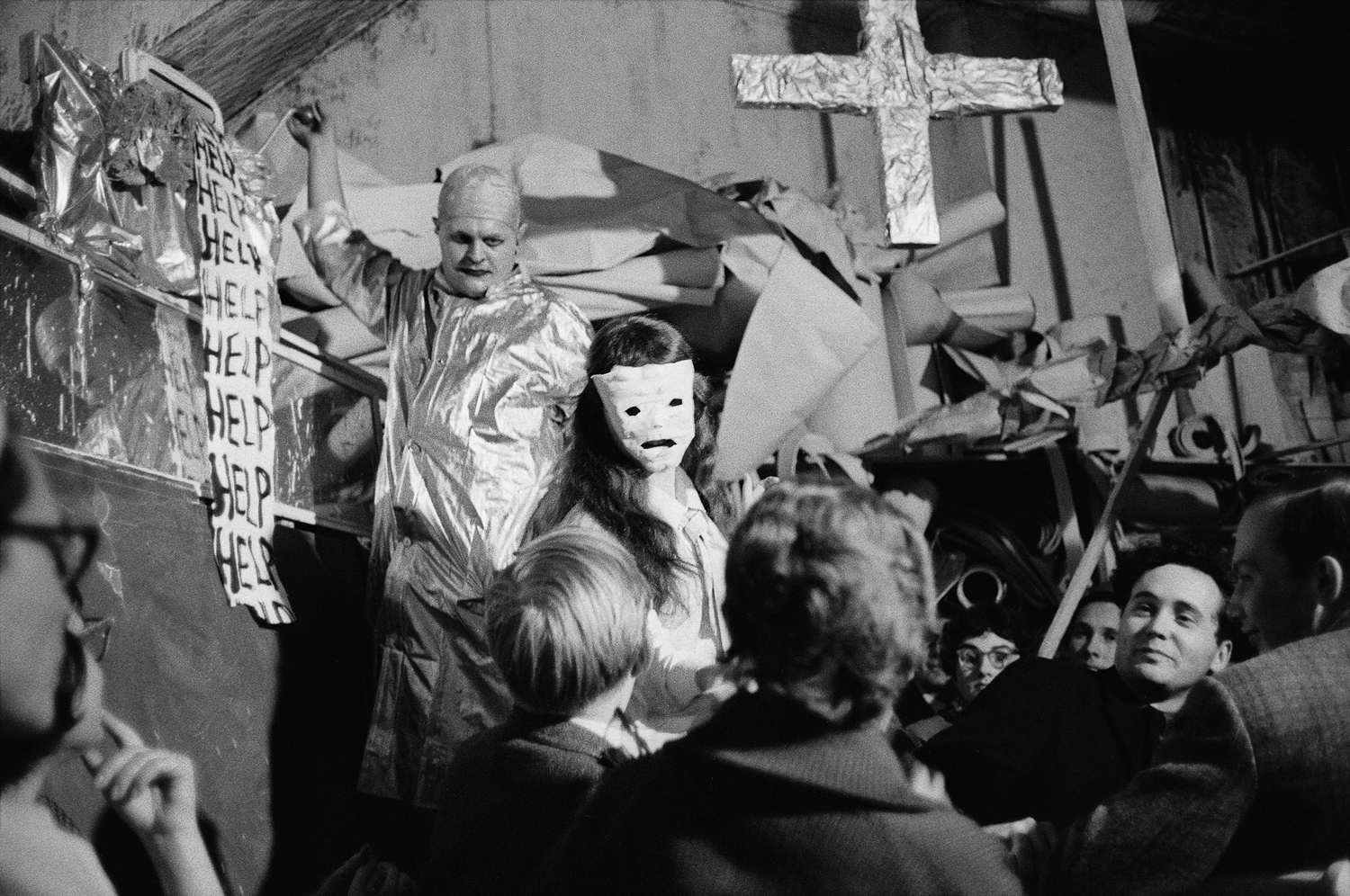
Jim Dine and Robert Indiana (lower right) in Jim Dine's Car Crash, performed at the Reuben Gallery, November 1–6, 1960. © Robert R. McElroy/Licensed by VAGA, New York, New York
What intrigues me in all this is the complexity of life on earth in 2012. Being an artist or critic means becoming a meteorologist, figuring out where the winds will be blowing next and grabbing the next train headed in that direction. As Nur said about Vasif Kortun, “he seems to be able to predict where art institutions will go.” The crystal ball no longer reflects the environment of birth or habitation; space is malleable and changeable, and we are all on our own in negotiating the shifting relationships between personal experience, national loyalties and the global marketplace. The irony, however, is that the “incredible lightness of being” (to quote Milan Kundera’s words) brought on by this condition puts a lot of pressure on artists to hunker down and figure out who they are. Hansen writes: “Even as Istanbul artists are merging with the international community, they are also looking backward to discover themselves.” History, psychology, sociology, whatever: one of the conditions of international stature is that artists are required to cultivate an authentic local voice to communicate with the global audience. And in countries whose histories are riddled with violence, dictatorship, repression or colonialism, the nature of such a voice is not self-evident.
Hansen’s article catalogs the usual demands that Turkish art be Turkish and not Orientalist, whether or not the artists in question were taught to imitate Western modernism in school. Creative people and gallerists are often stumped about what “real Turkish” art would look like, or what percentage of Western education and expectations they would have to shed to be considered authentic. The same week that Hansen’s article was published in the New York Times, Chika Okeke-Agulu came to lecture in the Art History Department at New York University about the painter “Ibrahim El Salahi’s Postcolonial Modernism,” and about his impossible struggles in the 1950s and 1960s to accommodate critics who expected him to reject his European education – and his interest in communicating with his international peers – in order to create an authentic Sudanese art. It is easy to see that there’s a pattern here. But in a world where “everything is central and everything is the periphery,” as Sylvia Kouvali (the Greek owner of a hot Turkish Gallery) said, we should stop putting so much irrelevant pressure on artists whose privilege has been to work in the international art world. We should perhaps see ourselves, and the artists who share our experiences, as the messengers who can use the global language of art to describe local experiences, understanding that their authenticity in 2012 might be within the temporal and spatial bouillabaisse of what historian Terry Smith has called “contemporaneity.” Young artists from Istanbul, a privileged few who might have more in common with art students in New York than with the compatriots my friends often referred to as “the locals,” might want to say something about this rather than about their Ottoman past or their essential “Turkishness.”
Probably the most moving commentary in Hansen’s piece came from the artist Kutlug Ataman, who has been negotiating the delicate relationship between his local roots and his international experiences for some time now. He left Turkey after the 1980 military coup and returned to Istanbul 10 years ago. Hansen says that Ataman doesn’t think Turkish artists have confronted the real source of their material. He described a recent incident when a mob of Turkish men attacked gallery goers sipping alcohol on the street in their fashionable clothes. In the center of Istanbul, Turkey’s two worlds came face to face, and Ataman considers this the “real” Turkey. “When I look at artists’ practice in Europe, I am not inspired,” he is quoted as saying, “If the artists here can engage with Turkey, they will be ahead of the rest of the world. Because the world is this. This desert.”
And this, of course, is the point of my essay. I am writing because “the world is this,” and “this” is New York too. I spent the day walking around Chelsea, looking at art in various galleries. There’s a lot of bad or just plain silly stuff out there as usual, but this has been a pretty interesting season. And that’s because Ataman’s “desert” has permeated our town, has invaded the slick expanses of new condos and juice bars and fancy gyms. Some American artists may not be acknowledging the new landscape any more than some Turkish artists, but other voices are speaking loud and clear. Adel Abdessemed, an Algerian who studied in Paris, has a terrifying exhibition of sculptures and drawings entitled Who’s Afraid of the Big Bad Wolf? at David Zwirner Gallery. Free-handed sketches of various animals with explosives strapped to their backs are juxtaposed with, among other things, a capsized boat filled with ominously stuffed black garbage bags.
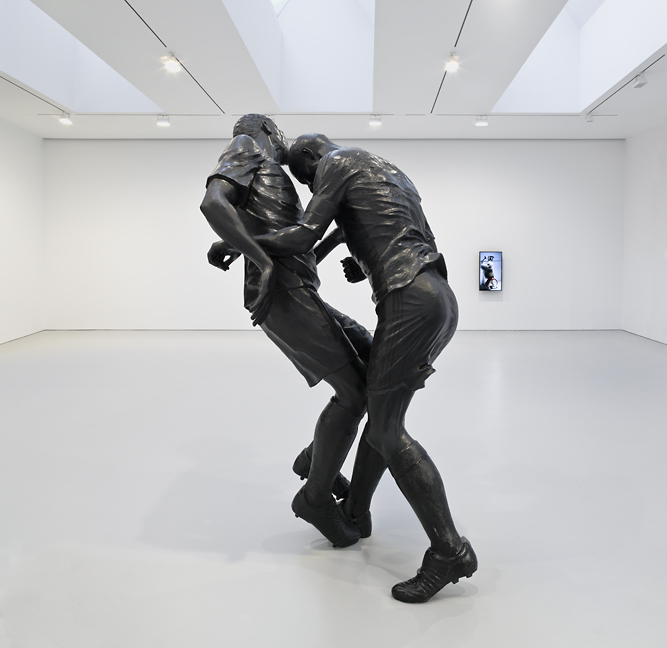
Installation view of Adel Abdessemed Who's Afraid of the Big Bad Wolf at David Zwirner, New YorkFebruary 17 - March 17, 2012Courtesy the artist David Zwirner, New York
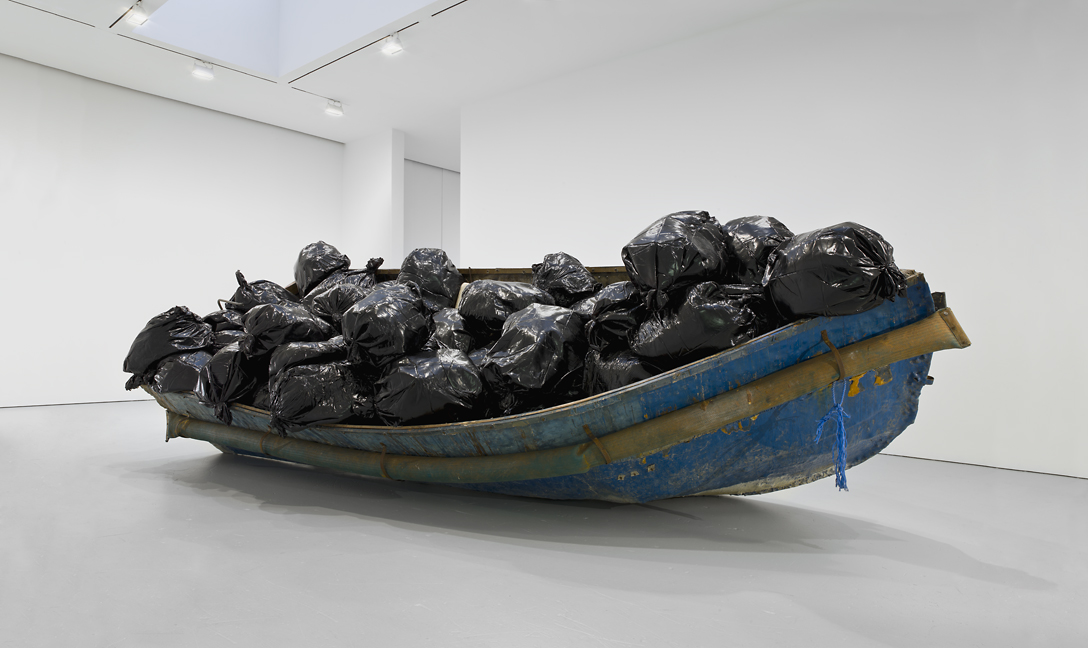
Installation view of Adel Abdessemed Who's Afraid of the Big Bad Wolf at David Zwirner, New York February 17 - March 17, 2012 Courtesy the artist David Zwirner, New York
First Look, a group show at Yossi Milo that brings together works by artists whose first New York exhibitions were presented at the gallery, is a powerful assemblage of photographs by South African Pieter Hugo, Norwegian Simen Johan, Chinese Liu Zheng, German Loretta Lux, Japanese Kohei Yoshiyuki and American Alessandra Sanguinetti, among others. These are often grotesque images, filled with explicit and implicit violence against persons, animals and the environment, and together they create a powerful statement about life on earth in the 21st century. The desert winds are, indeed, blowing through our town. We may no longer be the “hip city,” but we are still a place where urgent voices can be heard – and sold.
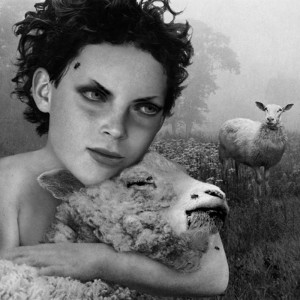
Simen Johan "Untitled #65", 1997 From the series "And Nothing was to be Trusted", Gelatin Silver Print © Simen Johan, Courtesy Yossi Milo Gallery, New York

Alessandra Sanguinetti, Untitled, "From On the Sixth Day", 1996-2004 From the series "On the Sixth Day", Chromogenic Color Print © Alessandra Sanguinetti, Courtesy Yossi Milo Gallery, New York
Links
Slide show “Istambul’s Cultural Rebirth” in The New York Times Magazine
